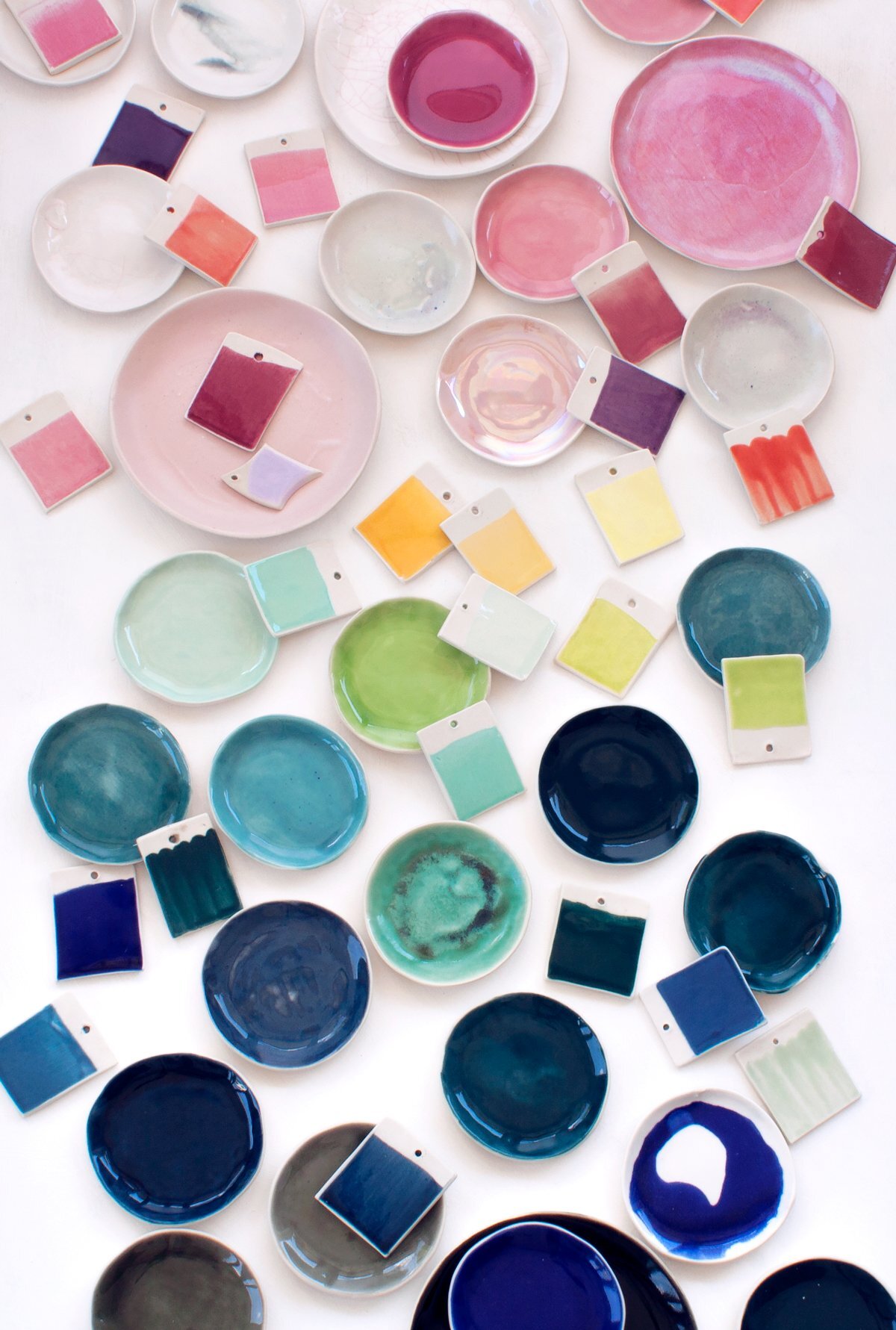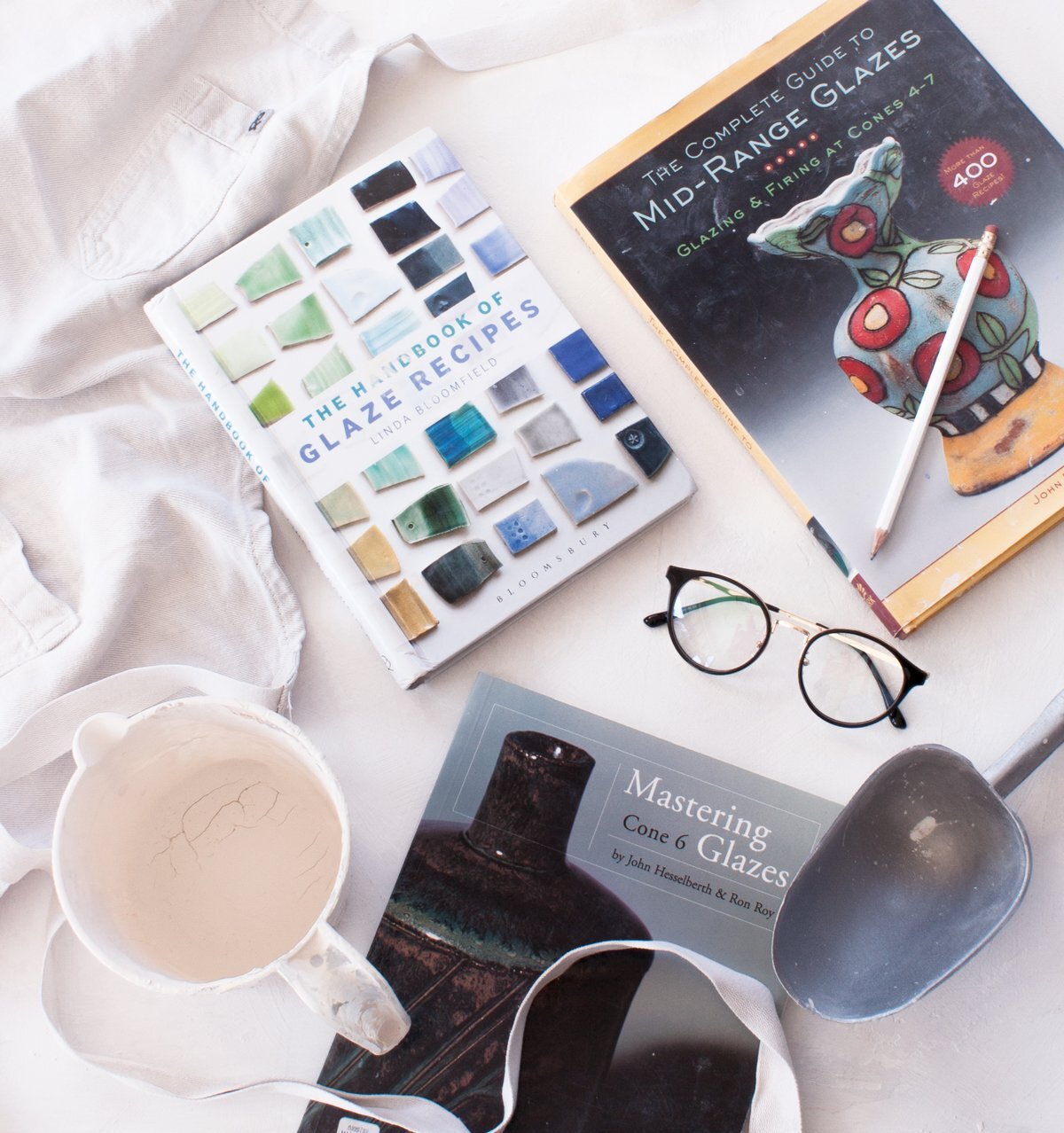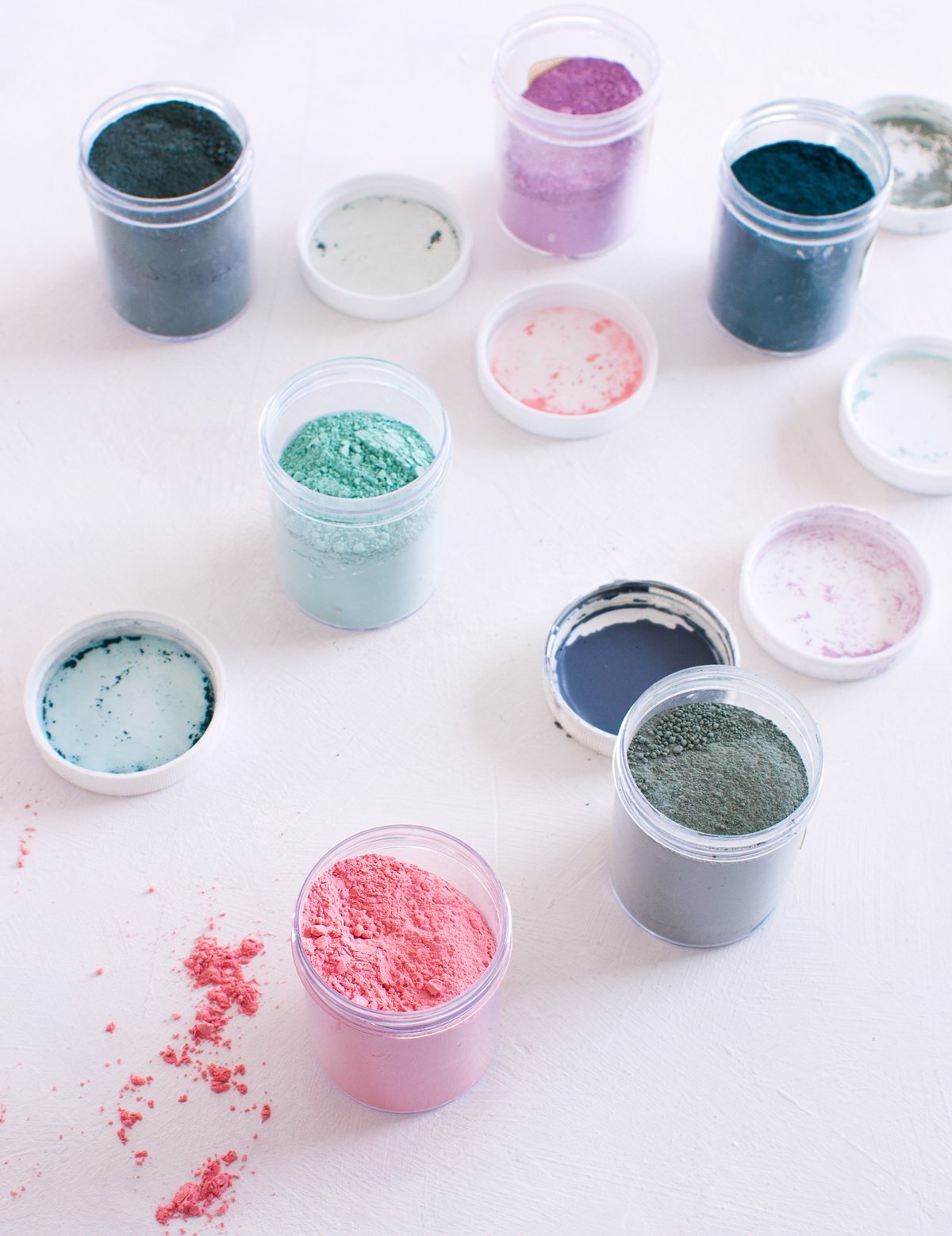Let's Learn Together: Best Glaze Making Resources, Books, Tools, and Tricks
I love a good ceramic glaze. Glossy, colorful, painterly glazes are what Suite One Studio is known for and I receive messages about my glazes almost daily! I don't share my formulas directly because I think the hunt for a good glaze is a huge part of the process, and I'm not ever going to suggest you skip the hard stuff by handing out the answers. The hard stuff is where the learning happens and that's how you develop real skills.
So nope, I'm not sharing my glazes here. But I am sharing my favorite resources for learning about glazes, some of the best places on the internet to track down formulas you can try, and my favorite tools to get the job done right-- and by that I mean practicing dust safety and making informed decisions about which materials to do a little extra research about before you bring them into your studio-- Did you know lead was regularly used in glazes many decades ago? There are some other materials out there that you probably want to avoid and you'll learn all about them through the resources below. Ready the jump in?
My Three Favorite Glaze Books:
The Complete Guide to Mid-Range Glazes, by John Britt
The Handbook of Glaze Recipes, by Linda Bloomfield
Mastering Cone 6 Glazes, by John Hesselberth and Ron Roy
There are tons of other informative glaze books out there, but these three are the best in my opinion and really all you need to get started. Each book offers something different and they're all reader friendly enough that even with little to no glaze making background you can pick it up and get started on your glaze making journey quickly.
Here's where each book excels:
The Complete Guide to Mid-Range Glazes has a huge assortment of glaze recipes. The glazes are organized by color which makes finding a formula in a specific hue as simple as possible. I like that this book focuses on the full range of mid-fire and in both reduction and oxidation kiln atmospheres. Currently this is the book I'm experimenting with the most in my studio.
The Handbook of Glaze Recipes is my favorite for understanding why certain materials function as they do within a glaze. The beginning of the book is filled with technical information including molecular chemistry models that basically blow my mind-- in a really really good way. Linda Bloomfield breaks all of this information down into digestible portions that will leave you with a deeper understanding of glaze chemistry, providing you with the confidence to experiment because you'll know why things do what they do within a glaze.
Mastering Cone 6 Glazes was the first glaze book I ever purchased and I continue to go back to it. I don't fire at cone 6 anymore so some of the formulas aren't directly useful for me but the authors of this book discuss food safety in great detail and that's really important to understand if you're making functional tableware like we are!
Online Glaze Making Resources:
Glazy.org: This is the site I wish existed years ago! It relies on user submissions and covers every imaginable firing atmosphere (electric kiln: oxidation firings, gas kilns: reduction firings, and many more!) as well as the full ceramic color spectrum, firing temperatures, and glaze surface sheen. You can even create an account to save your favorite finds and categorize them!
Ceramic Arts Network Daily: An oldie but still maintaining its position as the go-to source for all things ceramics. You can learn basically anything about pottery here. In the Freebies category download their Tried & True Glaze Recipes, available in different cone firing temperatures.
Digital Fire: This website doesn't visually present as the valuable resource it is. By that I mean, remember websites from the 1990s? This is an aesthetic throwback. Once you get past that jolt and dig into the information it's easy to see why potters looking for detailed technical information and troubleshooting turn to this site again and again.
Tools to Set Up Your Glaze Making Studio:
Particle Dust Mask: Technically a Particulate Respirator, this is the exact one I have. I have the small size, which like the other sizes comes with adjustable head straps to get a secure fit.
Gram Scale: I prefer a digital food scale. This is the one I have.
Stainless Steel Bowls: Multiple sizes are so useful!
Stainless Steel Scoops: A variety of sizes can be helpful, making small and large glaze dry material measuring easy as can be.
Underglaze Pencil: I write on the back of my test tiles the glaze name and colorant percentages.
Notebook: This is for recording your findings, trust me this is invaluable. You may think you'll remember the details from various firings (noooope) keeping notes is the best way to actually keep track of these things and learn firing to firing. Bonus, I linked to a fun notebook to capture your very best ideas.
Wax Resist: This is for protecting the underside of your pieces from glaze. This brushable wax resist is easily applied with an ordinary paint brush and washes off the brush in water.
Bamboo Paintbrush: Various sizes and bristle types are recommended to explore how the glaze behaves with different applications. I always gravitate toward my bamboo brushes, I love the way my glazes look applied with them!
Mesh Strainer Sieve: Designed for small test batches this is a small 100 mesh size sieve I recently discovered online. I use a larger screen version available here in both the 60 and 80 mesh. These are awesome because their wider rims allow them to sit within a 5 gallon bucket and they even come with an optional brush attachment for breaking up particles and pushing the material through the sieve.
Glaze Mixing Tips:
Always take notes. This was drilled into my head in college yet I insisted stubbornly for years that I'd remember things without writing them down. That is 100% not the case. So just write things down. You'll appreciate it later.
Wear a mask, and the proper kind: a Particulate Respirator. Silica dust particles are especially harmful for potters and are in our glazes and our clay. When silica is wet like our moist clay, liquid slips, and liquid glazes there's no danger. But when you're dealing with dry materials for glaze mixing and even dry clay the very fine silica dust will get into the air and may cause silicosis-- irreparable scarring to the lungs. Make sure your mask is made for particle protection. I'm linking this again because it's that important. I prefer this reusable respirator that fits snugly on my face and allows me to replace the filter cartridges as needed.
Don't overthink it and don't overdo it. Glaze making offers an adventurous spontaneity that's a highlight for many potters, myself included! I've learned to balance the high of experimentation with the very real possibility that the glazes I mix will be total flops. With that in mind, don't overdo it and glaze a series of pots with an untested glaze. Practice patience and mix up a test batch before applying it to a kiln full of pots. Just because a formula looks promising or an author claims it'll work a certain way doesn't mean you'll have the same success with your particular set of clay and firing variables.
I'd love to know what you guys think about these tips and resources! Do you have a favorite resource I missed or a tip you'd love to share? Post a comment or send me an email!
Happy Glaze Mixing!
xoxo Lindsay




